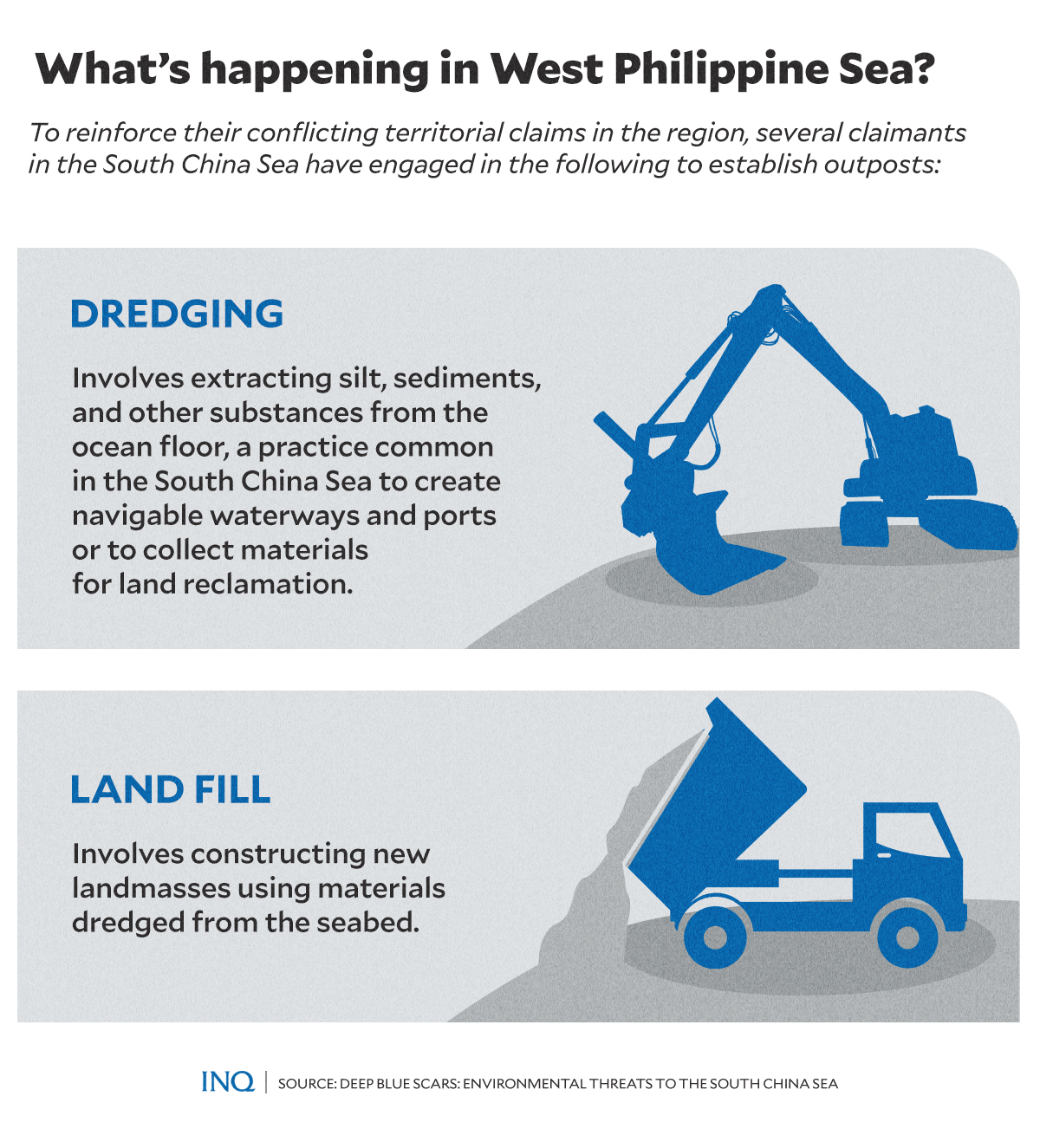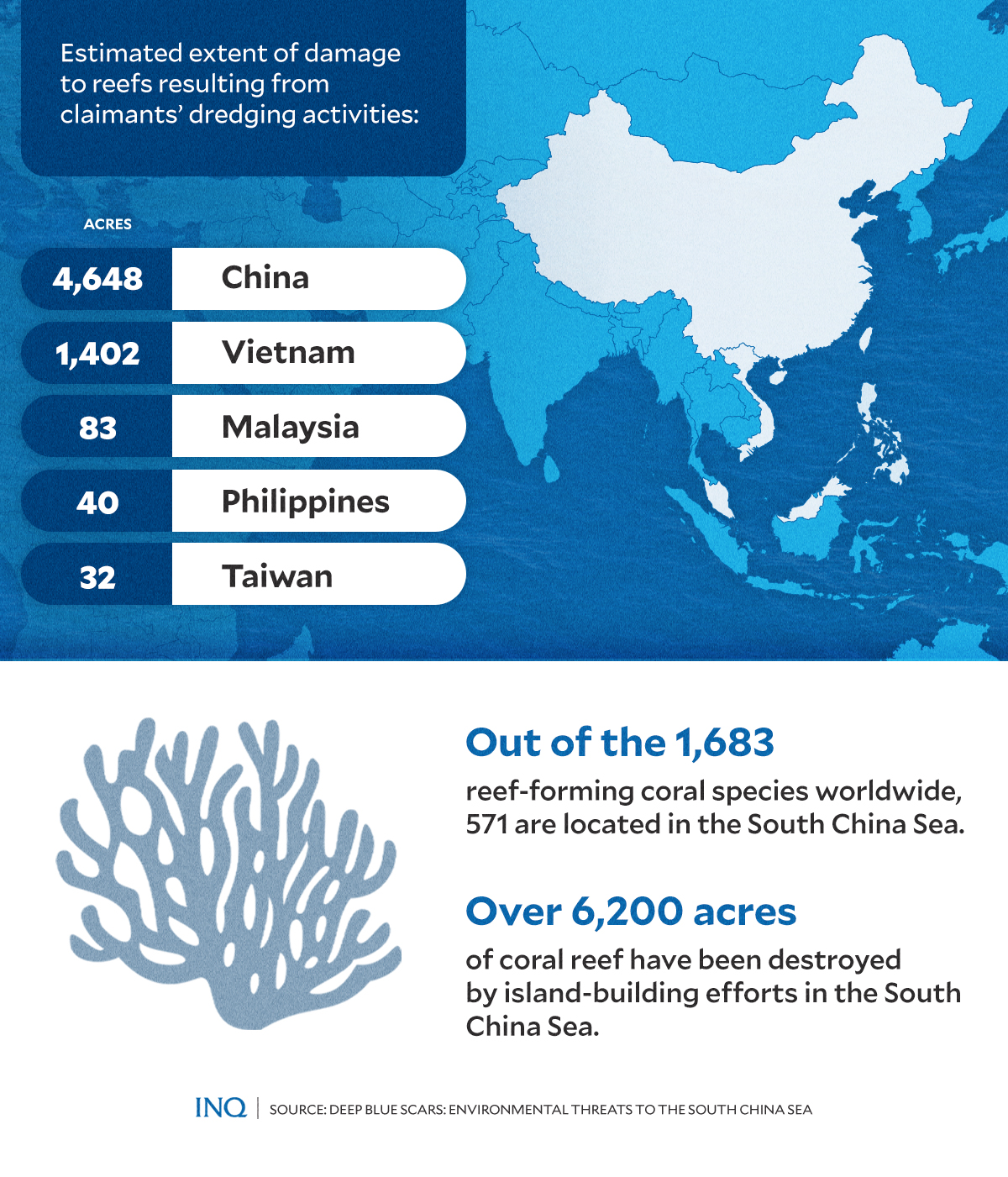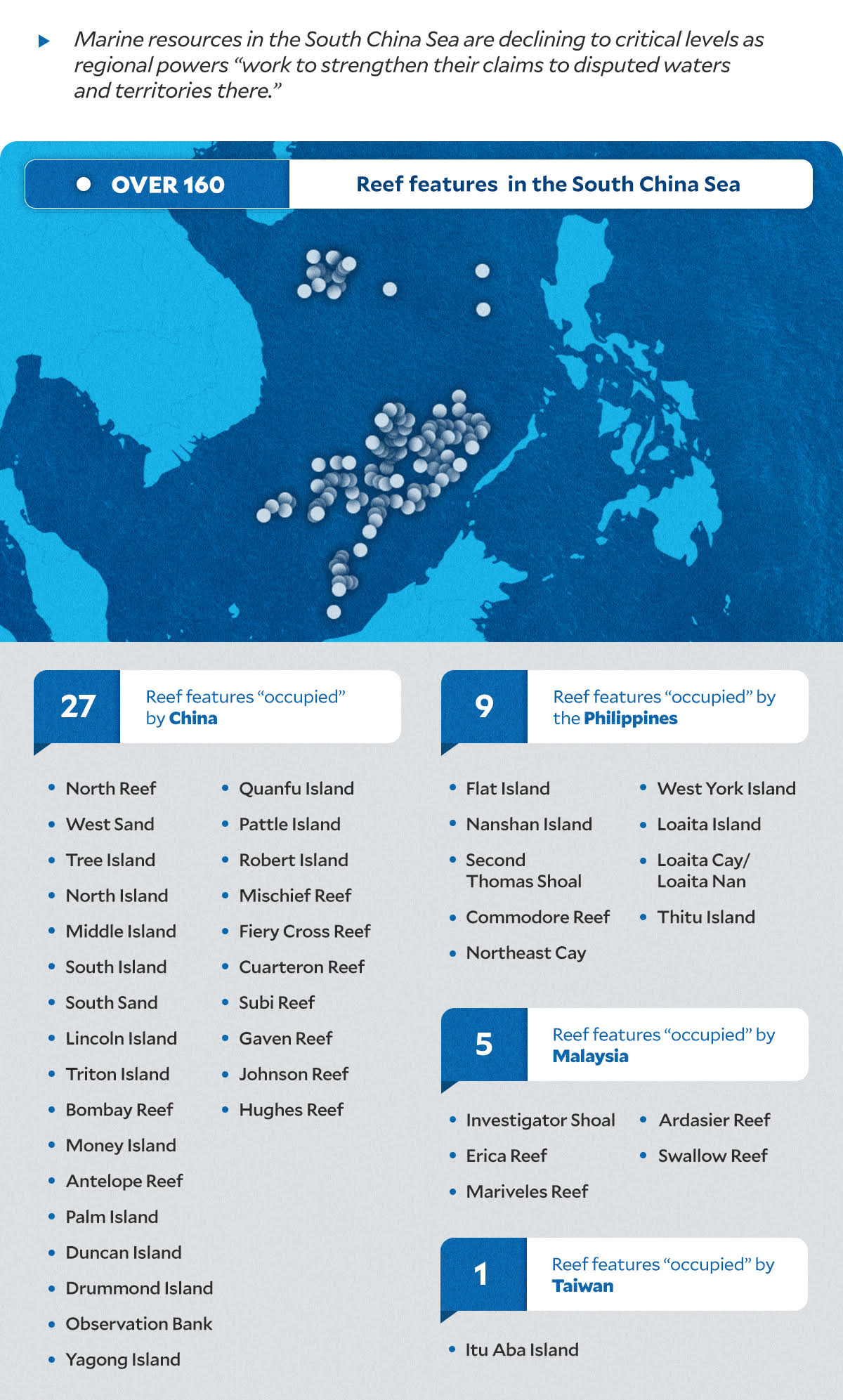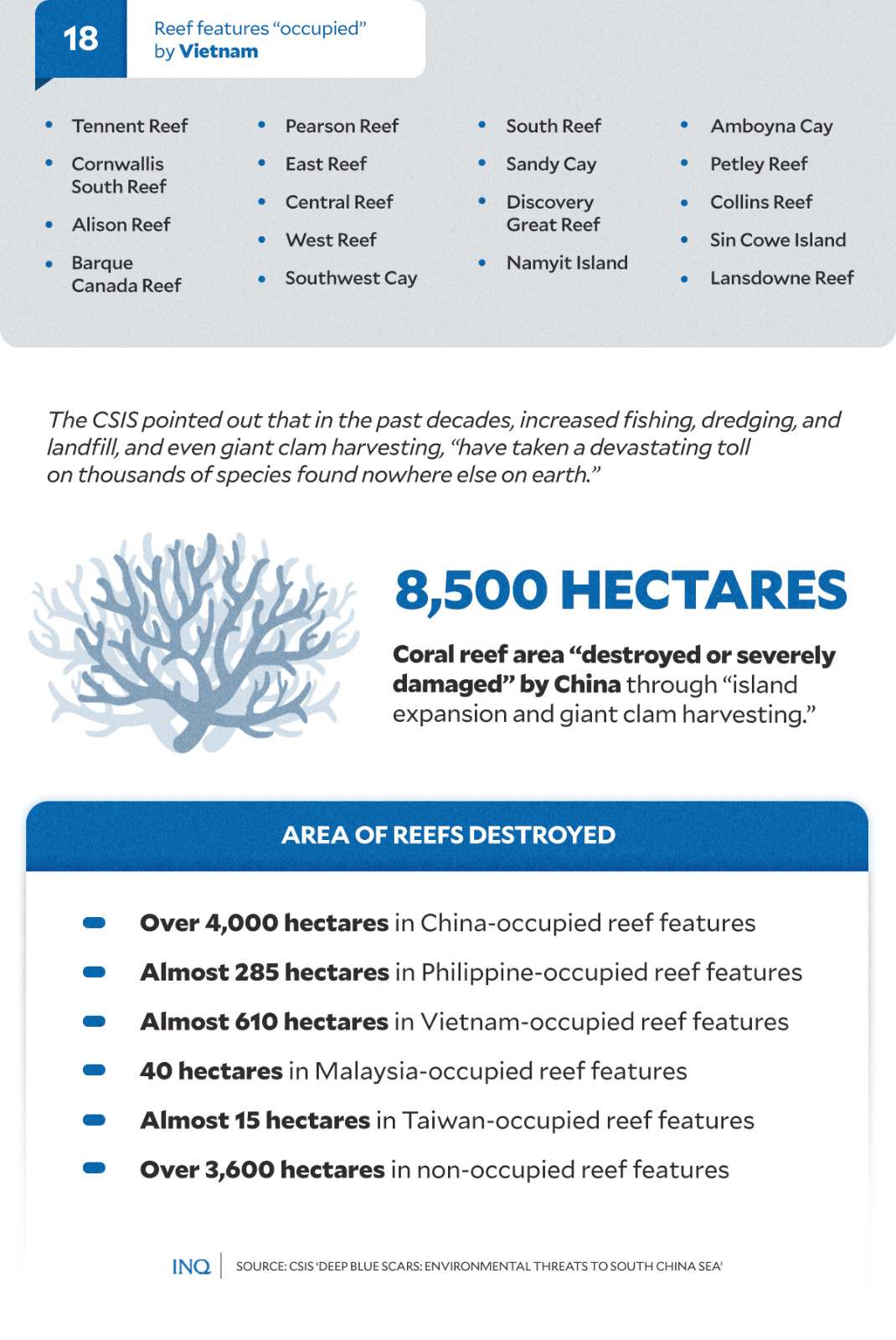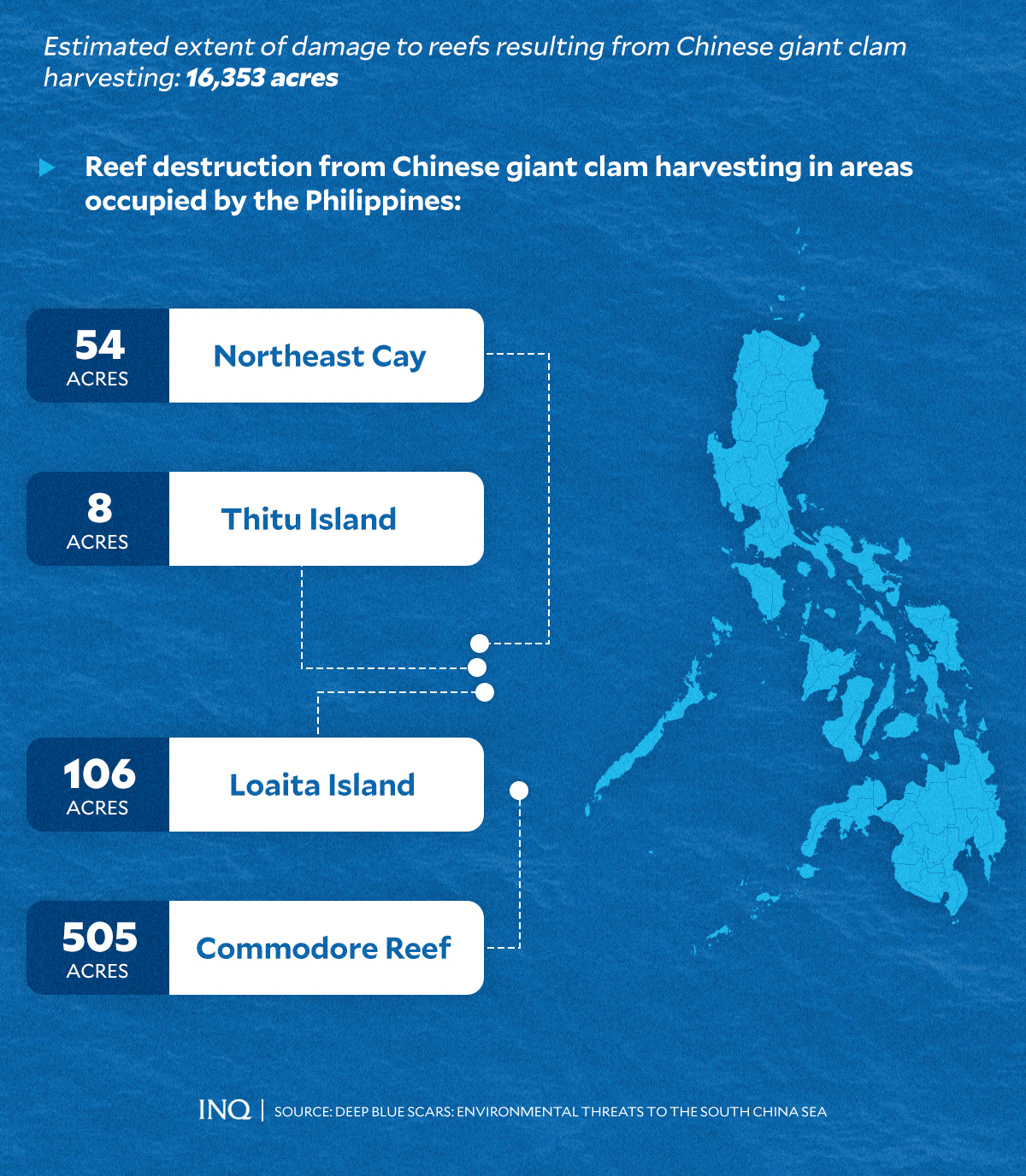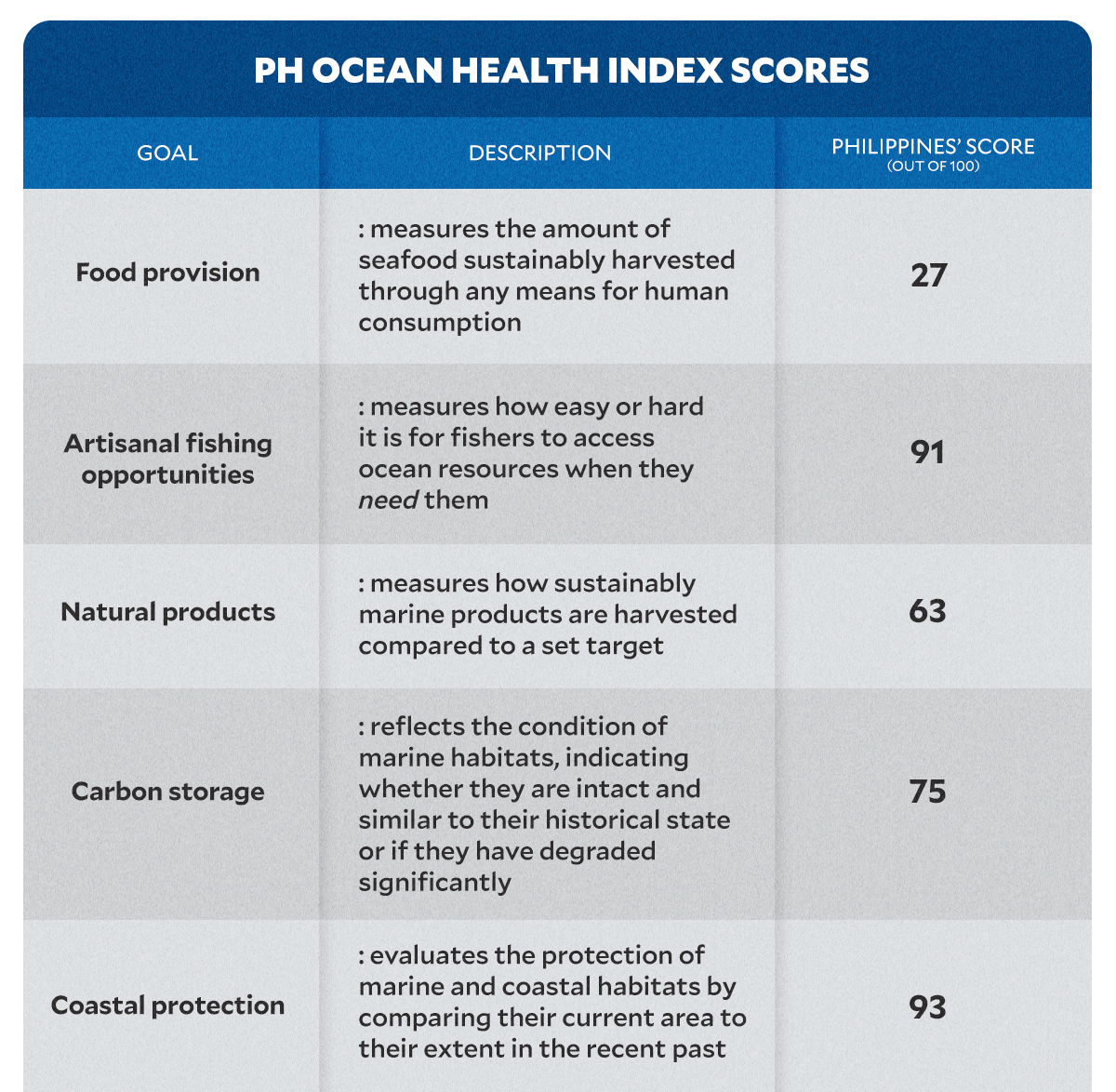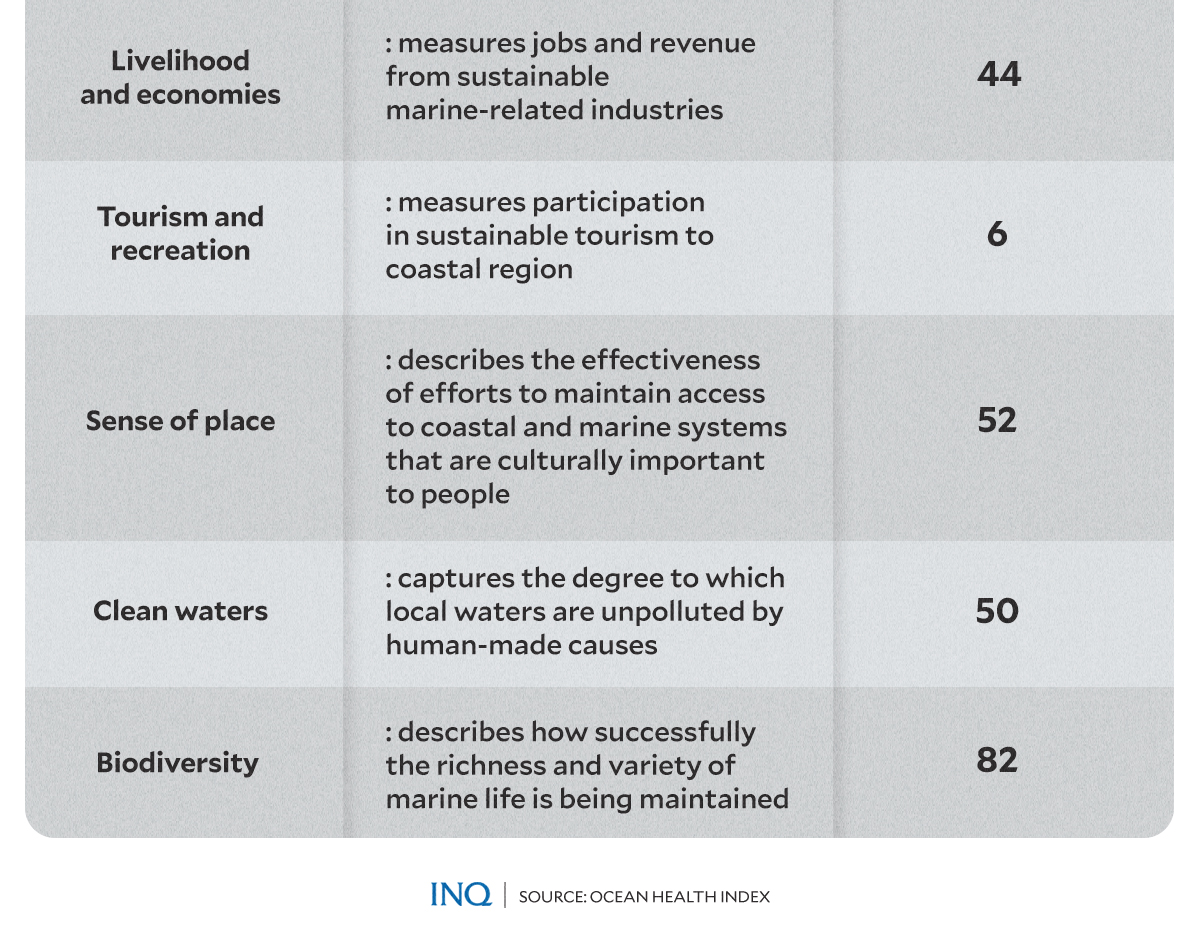PH ocean health: From bad to worse amid China invasion of WPS
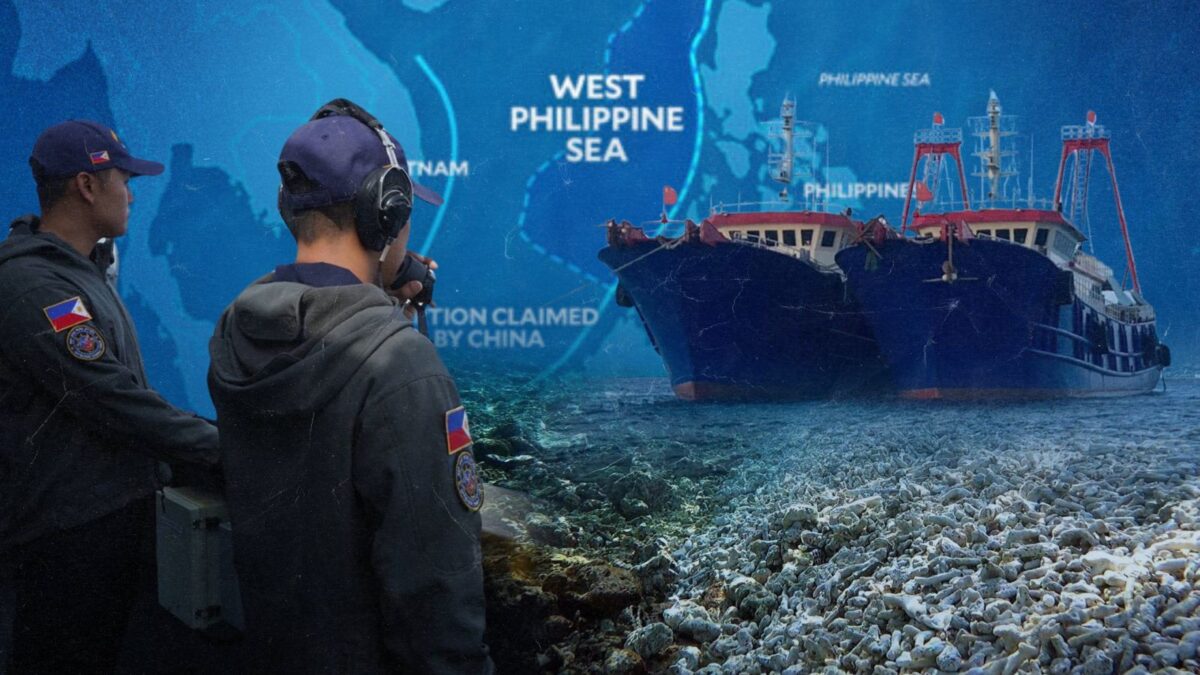
West Philippine Sea composite image by DANIELLA MARIE AGACER from file photos from INQUIRER.net, Agence France-Presse, and Philippine Coast Guard.
MANILA, Philippines — The Philippines has recently ranked 214th out of 220 countries in the Ocean Health Index, a situation exacerbated by China’s destructive campaign to invade Philippine waters and own these.
In the 2023 Ocean Health Index, the Philippines scored 58 out of 100, significantly below the global average of 73 and marking a substantial decline from previous scores of 67 in 2021 and 65 in 2020, signaling deteriorating marine ecosystem health.
READ: PH ocean systems deteriorating, says study
This horrific deterioration of marine ecosystems is particularly evident in the maritime areas on the western side of the Philippine archipelago, known as the West Philippine Sea, which is also part of the Philippine exclusive economic zone.
This region, crucial for its biodiversity, is also a focal point of an ongoing campaign by China to rob the Philippines of its territorial waters, further complicating conservation efforts and exacerbating environmental degradation.
Massive coral reef destruction
A comprehensive study by the Asia Maritime Transparency Initiative (AMTI) titled “Deep Blue Scars: Environmental Threats to the South China Sea” reveals that dredging and landfill operations, attributed to China, have caused significant coral reef damage in Philippine waters over the last 10 years.
Dredging involves extracting silt, sediments, and other substances from the ocean floor, a practice common in the West Philippine Sea to create navigable waterways and ports or to collect materials for land reclamation.
Dredging, the study stressed, can fully remove essential reef structures, which leads to irreparable and long-term changes to the overall structure and health of the reef.
Landfill, meanwhile, involves constructing new landmasses using materials dredged from the seabed.
To strengthen their competing territorial claims in the South China Sea, various claimants have resorted to destructive dredging methods.
READ: ‘Irreparable harm’: China intrusion’s impact on West Philippine Sea ecosystem
These island-building activities have destroyed over 6,200 acres of coral reef, with China responsible for 75 percent of this environmental damage.
“From late 2013 to 2017, China used dredging to build out its artificial islands. Its cutter suction dredgers would slice into the reef and pump sediment through floating pipelines to shallow areas to deposit it as landfill,” the study explained.
“This process disturbed the seafloor, creating clouds of abrasive sediment that killed nearby marine life and overwhelmed the coral reef’s capacity to repair itself,” it added.
Commercial satellite imagery analysis by the Center for Strategic & International Studies (CSIS) and the AMTI showed that China has destroyed and buried around 4,648 acres of reefs. Much of the destroyed reefs are in the Mischief Reef — locally known as Panagniban Reef.
Another culprit contributing to the huge destruction of coral reefs in the disputed waters was Vietnam, which had primarily employed clamshell dredgers and construction machinery to excavate sections of shallow reefs and relocate the sediment to designated landfill areas.
“This method is slower and causes less collateral damage to surrounding areas. However, it still destroys the coral reef where the sediment is extracted and deposited,” the study said, noting that Vietnam has been responsible for damaging 1,402 acres of coral reef so far.
Other countries involved in the disputed waters have also contributed to coral reef damage:
- Malaysia: 83 acres,
- Philippines: 40 acres, and
- Taiwan: 32 acres.
Extent of China’s damage in WPS
Dredging and landfilling are only part of the story of coral reef destruction in the South China Sea. The AMTI study reveals that substantial portions of coral in the West Philippine Sea have also suffered due to giant clam harvesting, predominantly by China.
“The harvesting of giant clams for their remarkable shells has become popular in recent decades because of their resemblance to elephant ivory, which is now extremely difficult or illegal to obtain,” the study bared.
“The shells are typically worked into jewelry and statues and sold for high prices in China — as much as $106,000 per carved shell.”
While fishers from the Philippines and Vietnam also harvest giant clams, Chinese fishers are the ones who predominantly use this damaging technique. According to AMTI, Chinese activities have resulted in approximately 16,535 acres of reef damage.
READ: Justice sought as China intrusion brings ‘immeasurable’ destruction to PH coral reefs
AMTI’s analysis of 181 features in the West Philippine Sea identified four occupied by the Philippines that have been impacted by China’s giant clam harvesting:
- Commodore Reef (Rizal Reef): 505 acres
- Loaita Island (Kota Island): 106 acres
- Northeast Cay (Parola Island): 54 acres
- Thitu Island (Pagasa Island): 8 acres
Huge blow to biodiversity
The destruction is not just numbers but a significant blow to biodiversity.
The West Philippine Sea is home to 571 of the world’s 1,683 reef-forming coral species. This biodiversity is crucial for the marine ecosystem’s health and provides essential services such as coastal protection and fish nursery grounds.
According to the Department of Environment and Natural Resources Biodiversity Management Bureau (DENR-BMB), a significant part of the Philippines’ coral reefs is located in the West Philippine Sea.
These reefs are crucial as they not only support a diverse array of marine species but also provide critical protection against the impacts of waves, storms, and floods, as outlined by the United States National Ocean Service.
Many of these reefs are situated within the Kalayaan Island Group (KIG), identified by the DENR-BMB as vital sources of coral and fish larvae that benefit surrounding reef systems stretching from the western coast of Palawan to the Sulu Sea and even the Indo-China coast.
Despite various challenges, the Philippines maintains a high biodiversity score of 82 out of 100 on the Ocean Health Index.
This metric assesses the country’s success in preserving the richness and diversity of its marine life. A high score in this category signifies that most species face a very low risk of extinction and that the majority of habitats are effectively conserved.
Nevertheless, the Philippines received a modest score of 52 out of 100 for the “sense of place” goal in the Ocean Health Index, which evaluates each country’s effectiveness in maintaining access to coastal and marine systems that are culturally significant to its people.
This goal includes a subgoal called “lasting special places,” which assesses the protection of locations that are integral to marine-related cultural identities for current and future generations.
Unfortunately, the Philippines’ scores for this subgoal have declined, dropping from 64 in 2020 to 48 in 2023.











